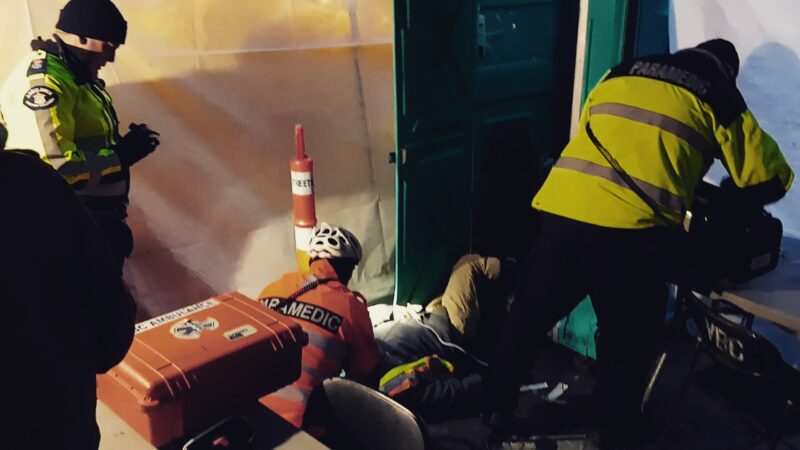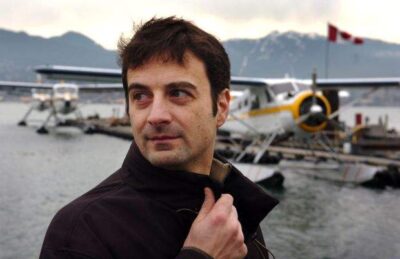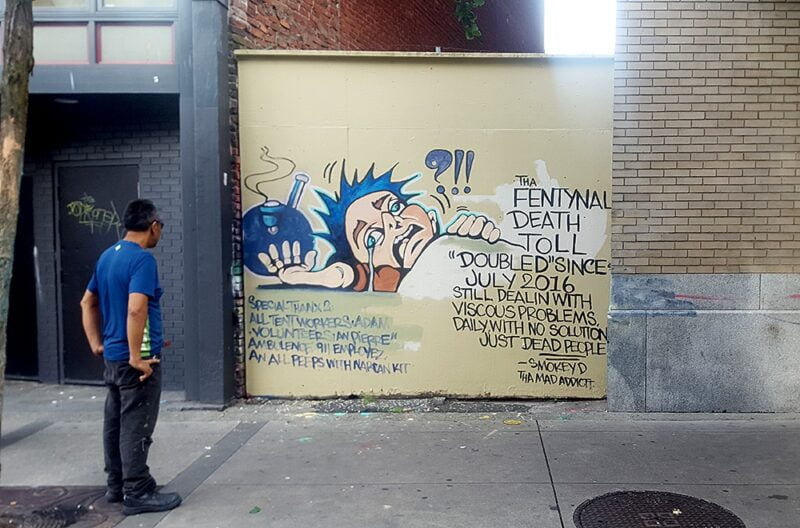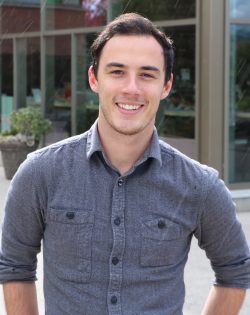#926 Crisis on the front line
The Last High
by Daniel Kalla
Toronto: Simon & Schuster Canada, 2020
$22.00 / 9781501196980
Reviewed by Benjamin Matthews
*
 Daniel Kalla’s The Last High begins with a murder, or rather a bunch of murders. We get a firsthand view of the murders through the eyes of Alexa, a 16-year-old girl who watches in bliss as five of her friends are attacked at a party, not one of them able to raise a hand to defend themselves. The killer never leaves, following those who survive the initial attack, including Alexa, to the hospital, where only the talent and determination of the ER doctors are able to halt the killer’s attack, and then only partially. Only Alexa and one other teen survive. The killer is Carfentanil, a hyper-potent version of the already-lethal opioid fentanyl. The teenagers are its first victims, but they will not be the last.
Daniel Kalla’s The Last High begins with a murder, or rather a bunch of murders. We get a firsthand view of the murders through the eyes of Alexa, a 16-year-old girl who watches in bliss as five of her friends are attacked at a party, not one of them able to raise a hand to defend themselves. The killer never leaves, following those who survive the initial attack, including Alexa, to the hospital, where only the talent and determination of the ER doctors are able to halt the killer’s attack, and then only partially. Only Alexa and one other teen survive. The killer is Carfentanil, a hyper-potent version of the already-lethal opioid fentanyl. The teenagers are its first victims, but they will not be the last.

Carfentanil has made its way into a batch of fentanyl meant for Vancouver’s drug scene, tainting it and making it toxic to anyone exposed to it on the streets. The effects are instantaneous. The victim feels a surge of blissful peace then darkness closes in. It doesn’t matter if they are first-time users like the teenagers at Alexa’s party or hardened users who treat fentanyl like an old friend. I refer to carfentanil as a killer because that is how Kalla uses it in his story. He treats carfentanil like a serial killer that strikes suddenly and randomly at all strata of society, from partners at law firms to the most destitute of Vancouver’s homeless population. From the moment Alexa and her friends are discovered, workers on the front lines know that this killer must be stopped.
The doctor who treats Alexa when she arrives in the ER is Julie Rees. Julie had her own issues with fentanyl in the past, which ended in a tragic death. She is driven to save Alexa by the guilt of that death. She approaches the act with a fierce and heroic determination that quickly morphs into the irresponsible. In her attempts to save Alexa’s life, Julie uses a procedure that breaks hospital protocol. She does so against the advice of both the specialist called to perform the procedure and her mentor, Goran, who is trying to save the other teens in the ER. “If it was your kid, would you want me to stop now?” she demands when Goran tries to counsel her against the action. The answer is, of course he wouldn’t; it would be unbelievably draconian of any father to answer differently. But he isn’t Alexa’s father, nor is Julie her mother. They are her doctors, and protocols like the one Julie breaks are put in place to remove precisely these kinds of impossible ethical decisions from their hands. Nevertheless, Julie goes ahead with the procedure. Alexa survives, though it is uncertain if she will ever regain consciousness or what her living condition will be if she does awaken.


While Julie’s tenacity gets her in trouble at the hospital, the detective assigned to the case, Anson Chen, is all too willing to use it to help him track down the source of the tainted drugs. He recruits Julie to consult on the case. She has helped him with other cases in the past. Her personal experience and her training as a toxicologist make her a valuable asset in drug-related investigations. She tags along as Chen meets with members of various levels of Vancouver’s drug scene, which, structurally, resembles any other industry. At the top are the suppliers, the people with the money who facilitate the influx of product. Next are the distributors or middlemen, the pushers and peddlers – dealers — working at street level to ensure that the ever-present demand of those at the bottom, the users, is met.
Of the three levels, I found the middlemen to be most interesting. The suppliers and users are driven by a single-minded motivation, respectively greed and need. The dealers, however, are the counterpoint to people like Julie and Anson, who are guided by sound moral and ethical principles, working to save the users from themselves and from the predations of the suppliers who profit from the users’ tragedy. The dealers we meet in The Last High, who are fully aware that their product kills, spend much of their time justifying their actions to themselves. They are unaware that their current supply is tainted and exponentially more toxic than normal, but they know fentanyl itself is a prolific killer. This knowledge does not stop them from trying to make a buck off it. One dealer refuses to sell to users unless they show him a naloxone kit — the band-aid our society has applied to the gaping wound of the opioid crisis, a quick fix that resuscitates people who OD in the hope of keeping them alive long enough for EMTs to arrive. Markku, the dealer who requires that his clients have the kits, knows just how important they are because he has used them multiple times to save his girlfriend after she has OD’d on fentanyl. You’d think this would factor into his ethical calculations, but it doesn’t, at least not in any way that matters. She still uses, and he still sells.


There are many deaths in the story, some tragic and some banal, but Kalla writes with an energy and momentum that keeps the story from becoming grim and depressing. This is not a portrait of the tragedy that is the opioid crisis, but rather a thriller: a hunt for a killer who must be tracked down to stop bodies from piling up. Kalla is an ER doctor himself, and his experience and expertise are on full display in his hospital scenes and descriptions. And, while much of the story is geared for narrative speed, there are still moments of incredible power, such as when Julie meets Alexa’s parents, when Kalla takes his foot off the gas and allows the full import of the situation to settle on his audience. I appreciated the honesty in these moments. Kalla draws from his own experience, allowing us to experience a fraction of the emotions that he has felt far too many times.
The plot ties itself up neatly in the end, but the question of blame still hangs heavy in the air. We knew from the beginning who the killer was, the carfentanil, but who is to blame for the deaths? It was here at the resolution that I took issue with the story. We are given a character, a despicable misanthrope, to hate. Much of the blame is forced onto his shoulders, but other characters, though equally culpable, are let off. Despite their actions leading to many deaths, Kalla provides cover for them, shielding them from our recrimination. Yes, they felt terrible about their actions, whereas the misanthrope did not, but should their contrition absolve them of their accountability? Kalla seems to think so, and maybe you will too.
Despite this quibble, The Last High is an excellent medical thriller. I had not heard of Kalla before, but I will be looking for him in the future. If you enjoy fast-paced, exhilarating storytelling, you will enjoy this book.
*
As of this writing (August 8, 2020), there have been 5,741 illicit drug toxicity deaths in BC since the opioid crisis was declared in 2016. This is a fraction of the number of overdoses. The situation would be orders of magnitude more tragic if it weren’t for the work of frontline workers and the work done to educate the public on the dangers of these drugs. The sad reality is that this crisis does not discriminate. It can affect everyone. The best way to protect yourself and your loved ones is to educate yourself. Please take the time to click on this link to learn a little bit more about the situation – Benjamin Matthews

*

Benjamin Matthews works as a consultant in heavy industry while studying for a double major in Psychology and English at Thompson Rivers University, Kamloops. He is an avid reader, writer, and cinephile, always on the lookout for a good story. Editor’s note: For The Ormsby Review, Ben has previously reviewed Sodom Road Exit, by Amber Dawn, and Death of a Doppelganger, by Rod Deakin-Drown.
*
The Ormsby Review. More Books. More Reviews. More Often.
Publisher and Editor: Richard Mackie
The Ormsby Review is a journal service for in-depth coverage of B.C. books and authors. The Advisory Board consists of Jean Barman, Robin Fisher, Cole Harris, Wade Davis, Hugh Johnston, Patricia Roy, David Stouck, and Graeme Wynn. Scholarly Patron: SFU Graduate Liberal Studies. Honorary Patron: Yosef Wosk. Provincial Government Patron since September 2018: Creative BC
“Only connect.” – E.M. Forster
2 comments on “#926 Crisis on the front line”